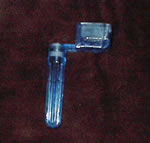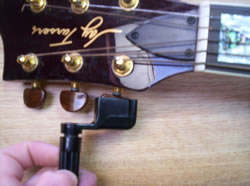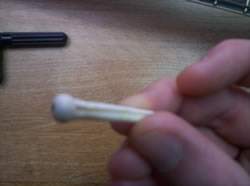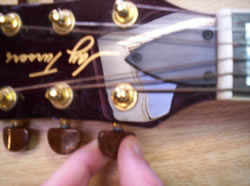How And When To Change Your Strings
If you start to see an oily, dirty build up on your strings then you should probably change your strings. The dirt from your hands and fingers is collected by the strings and will kill your tone.
Active players or professional players may change their strings one a week or more, especially if they are playing in public. Some players change strings just before each show.
String Gauges
Strings come in variety of gauges. The gauge of the string tells you the thickness of the strings. The lower the gauge the thinner the strings, higher gauges mean thicker strings. Most manufactures display the gauge size by the size (diameter) of the high E string (the smallest string). Typical gauges run from .008 to .012.
Different strings are made for electric guitar and acoustic guitar. The most popular electric guitar gauge is .009. Most acoustic guitar players use .010. Novice and intermediate level guitarists will want to stick with these common gauges.
More experienced guitarists may want to experiment with higher gauges (.011 or .012 and up) because they offer better sustain and tone. Higher gauged strings are harder to play. They feel “heavy” under your fingers and take some getting used to. They’ll also make your fingertips quite tender if you’re not used to them.
Do not use heavy gauge strings until you have had a guitar technician look at your guitar. Using heavy gauge strings may require adjustments that only a qualified technician should perform.
Crash Course Guide For Acoustic Guitar
There are thousands of types of guitars and many of them need different methods of changing strings. Use this guide as just an example.
One thing that will help you wind and unwind your strings faster is a little device you’ll find at your music shop:

Take you string winder (or if you don’t have one, do it by hand) and unwind the top string until it comes off the tuning machine. Trash the old string.

Now, with the string winder, you can turn it to where you will see a groove. That will help you pull out the pegs that hold the strings in place.

When you pull the peg out, you will see a groove in it. That is where the string should be inserted, like below :

After placing the string inside the peg and back into the hole in your guitar, insert the other end of the string into the tuning machine going from the INSIDE hole to the outside of the hole.

Now, just tune the guitar accordingly, either with the string winder or your finger.

Repeat this procedure for the other 5 strings.